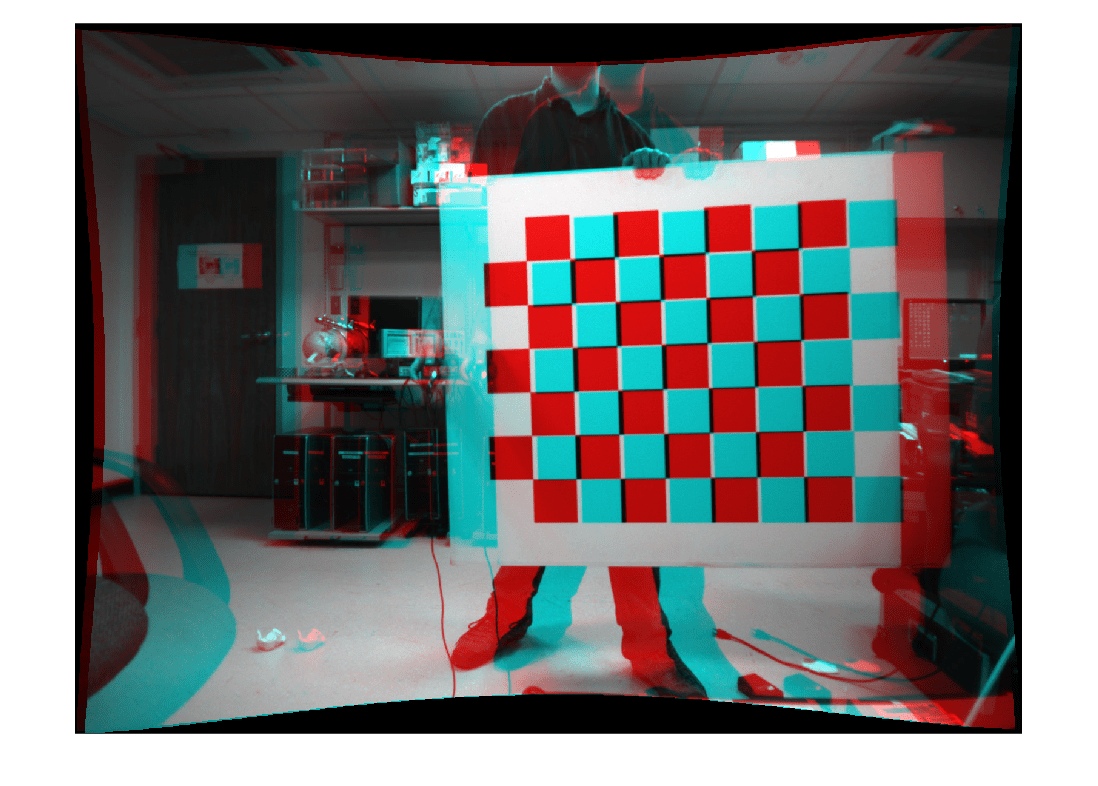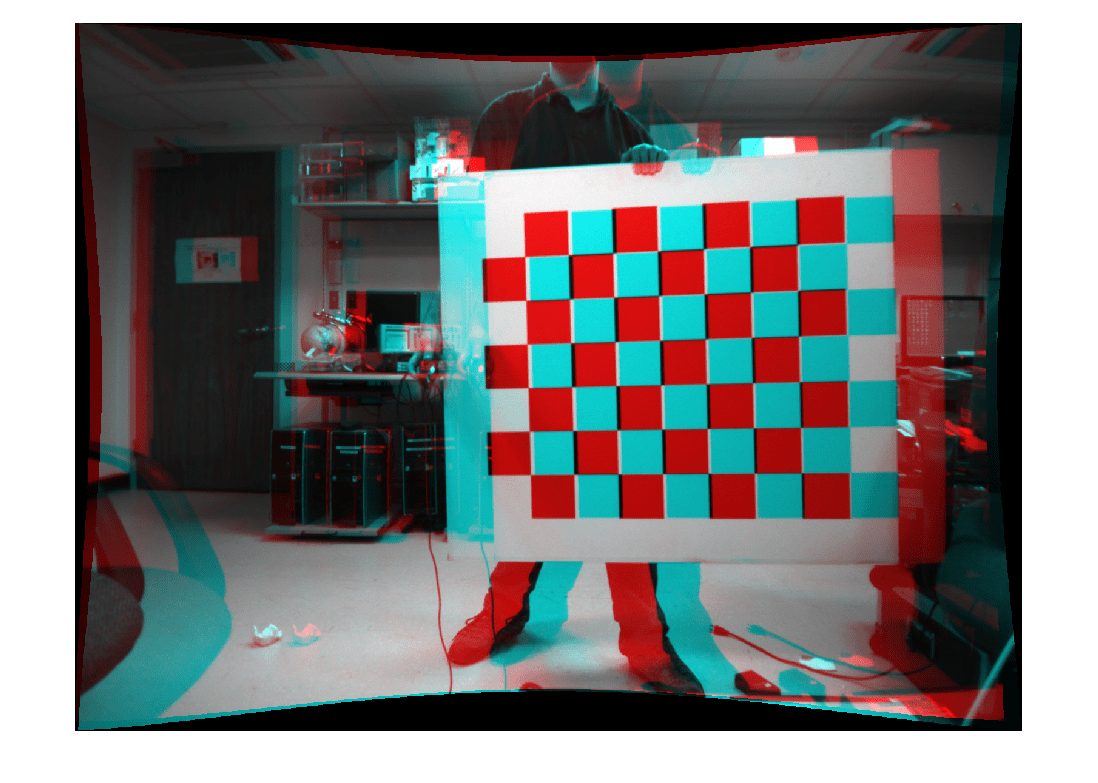stereoParametersFromOpenCV
Syntax
Description
stereoParams = stereoParametersFromOpenCV(intrinsicMatrix1,distortionCoefficients1,intrinsicMatrix2,distortionCoefficients2,rotationOfCamera2,translationOfCamera2,imageSize)stereoParameters object stereoParams.
The OpenCV spatial coordinate system specifies the upper-left pixel center at
(0,0), whereas the MATLAB spatial coordinate system specifies the pixel center at
(1,1). The stereoParametersFromOpenCV function
compensates for this difference by adding 1 to both of the x and
y-values for the converted principal point.
OpenCV stereo parameters cannot be converted to a MATLAB
stereoParameters object when an OpenCV fisheye model is used. In this case, you
can recalibrate the stereo camera using the Stereo
Camera Calibrator app.
stereoParams = stereoParametersFromOpenCV(___,WorldUnits=worldUnits)worldUnits, that describes the units of the world
points in addition to the input arguments from the previous syntax. Specify worldUnits as a
character vector or string scalar. For example, stereoParametersFromOpenCV( ___
,WorldUnits="mm") describes all parameters in terms of the world units
"mm".


